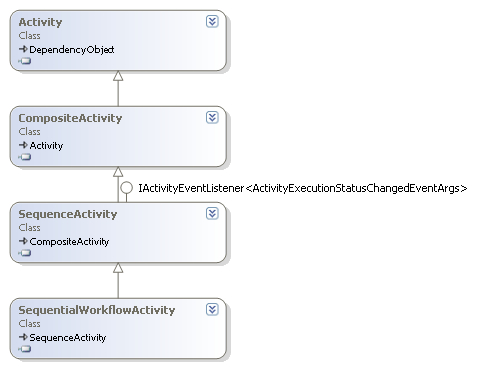Activities are the basic building blocks in Windows Workflow, and a sequential workflow itself is an activity—a SequentialWorkflowActivity to be precise. The SequentialWorkflowActivity class derives from the SequenceActivity class, which in turn derives from the CompositeActivity class. These superclasses dictate the behavior and characteristics of a sequential workflow. The class diagram as shown on the next page depicts this class hierarchy.

The CompositeActivty class provides the logic for an activity to contain one or more child activities. A sequential workflow will typically contain multiple children (and the children may also be CompositeActivity objects with their own children).
The SequenceActivity class provides the logic to execute child activities. The SequenceActivity iterates through its children in a forward-only direction, executing each child once and then moving to the next child. When the last child activity is complete, the sequence is finished. As...



